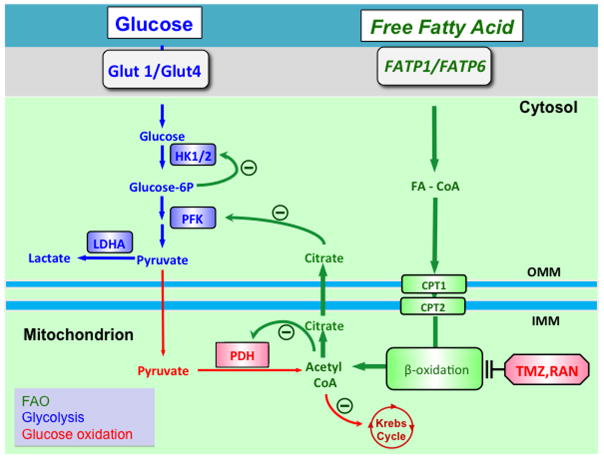Figure 2.
Manipulating fatty acid and glucose oxidation in PAH: The Randle’s cycle. Randle’s cycle is the reciprocal relationship between glucose oxidation and fatty acid oxidation. Note how the acetyl CoA and citrate produced by β-oxidation of fatty acids inhibits PDH (in the mitochondria) and phosphofructokinase (in the cytosol). This feedback (and other indicated feedback mechanisms) slow glucose oxidation under conditions where there is substantial fatty acid oxidation. The pharmacologic inhibitors of fatty acid oxidation, trimetazidine and ranolazine, can restore glucose oxidation by partially inhibiting fatty acid oxidation and activating Randle’s cycle. Abbreviations: CPT1/2 = Carnitine palmitoyltransferase 1/2, FA-CoA = fatty acyl-CoA, FATP1/6 = Fatty acid transport protein 1/6, Glut1/4 = Glucose transporter ¼, HK = hexokinase, HIF-1α= Hypoxia inducible factor 1α, LDHA = lactate dehydrogenase A, PDH = Pyruvate dehydrogenase, PDK = Pyruvate dehydrogenase kinase, PFK = phosphofructokinase, OMM=outer mitochondrial membrane, IMM=inner mitochondrial membrane, TMZ=trimetazidine, RAN=ranolazine. Reprinted with permission from 4.

